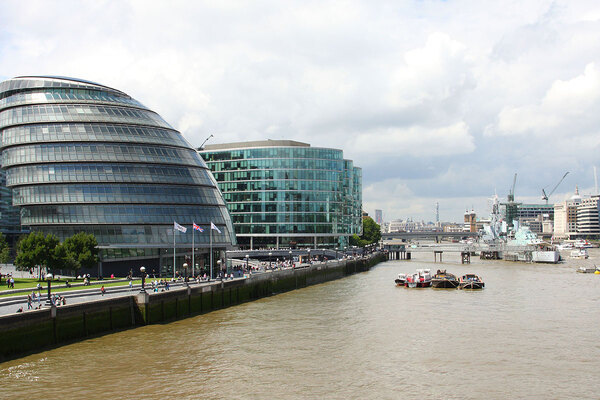Building Safety Regulator to swell number of staff by 60%
The Building Safety Regulator (BSR) is recruiting more than 160 staff members in the coming months to increase its workforce by 60%.
In an exclusive interview, Philip White, the director of building safety, explained the recruitment drive was a “complex process” that would be done “bit by bit” to grow the independent body, which currently has 255 employees.
New staff members with a variety of expertise will be needed, he said, from those who will assess safety reports to those who will have oversight of the building control profession. Others will investigate complaints or incidents that are brought to the regulator’s attention.
The head of the fledgling regulator took up the role last month after his predecessor, Peter Baker, retired. Mr White said he could not speak to Mr Baker’s personal situation, but “he was of that age where one would retire”.
Mr White has been involved in the BSR since its inception, leading policy and development work on the Building Safety Act 2022.
“Peter and I have been, for the last three years, working really closely, so it allows us some really good continuity,” he told Inside Housing. Under the new leadership, he said, “there should be no change in relation to momentum; no change in terms of the messaging and the focus”.
Established in last year’s Building Safety Act, the BSR sits within the Health and Safety Executive (HSE) and held its first conference in March. “The BSR will be the regulator, but regulation is not just about assessing safety cases or taking enforcement where you might need to,” Mr White said. “It is also about working in collaboration with stakeholders across the industry.”
In meetings with these stakeholders, he has been pleasantly surprised. “I’ve been quite heartened by the commitment and the thinking that’s going on out there,” he said.
All high-rise residential buildings in England (those that are at least 18 metres tall or have seven or more floors containing at least two residential units) must be registered with the BSR before October, after which it will become an offence not to be registered.
Mr White said it was “still early days” for the registration process, but “people need to remember the clock is ticking”. Last month, the regulator said 750 applications had been started since the register was launched in April.
There are an estimated 12,000 high-rise residential buildings in England, 6,000 of which are owned by social landlords.
A key element of the new regime is the need for landlords to submit a safety case report when a building is occupied. “There’s clearly a learning process going on by industry in its broadest sense, and that’s what we anticipate with the safety case regime,” Mr White said. “Ultimately, it’s about how you are managing your fire and structural risks in a building. In many ways, it’s things that people should have been thinking about for some time now.”
Mr White expected the new regime to be fully operational by April 2024, pending the passing of secondary legislation by parliament. In the meantime, a statutory residents’ panel is now up and running. “It’s a proper legal entity,” Mr White said.
From the moment he was appointed, Mr White knew he would only lead the BSR until a permanent successor was found. He sees himself in the role for “between four and six months”. When the new director arrives, “I’ll be working with them as we see things through to the next phase,” he said.
Asked how the BSR will build trust as an independent regulator, Mr White said: “It’s [about] being open and transparent… it’s about providing clarity to all concerned. But it’s also about being fair in terms of the actions that we take.
“That’s a long-term thing.”
Sign up for our regulation and legal newsletter
Already have an account? Click here to manage your newsletters
Sign up to the Regulation and Governance Conference
A brand new housing sector conference shining a light on changing regulation and best practice governance – from financial and ethical governance, to ensuring a fair and good service for tenants.
Bringing together 250 UK housing governance professionals in one setting for the first time, this event is an unmissable opportunity to kick-start critical discussions around regulatory policy, tenant satisfaction, accountability, transparency and financial risk management.













